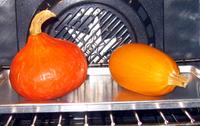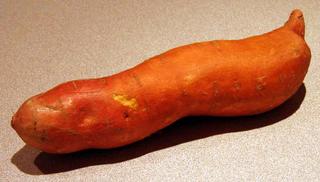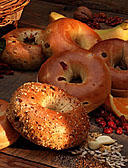
Of Italian origin. Originally not battered, deep-fried, boiled, broiled, or submerged in anything but the juice it gives up when coaxed properly. No wine, no tomato sauce, no fish or chicken stock, no water, no cream. A squirt of lemon and a sprinkle of parsley ... posthumously. Go ahead, coax a shrimp.
(I'm trying this new feature of Blogger where you can click the pic for a larger version.)
Ingredients1 lb. large shrimp - peeled, deveined, tails left on
2 tbsp.
high-heat oil
3 tbsp. olive oil
2 medium garlic cloves, sliced thinly
2 tbsp. lemon juice, freshly squeezed
2 tbsp. minced fresh parsley
1/8 tsp. ground black pepper
1/4 tsp. kosher salt
Spice mixture (Optional, or to your preference)
dried thyme
dried oregano
ground ancho chili
ground chipotle chili
paprika
red pepper flakes
cayenne
ground onion
ground garlic
turmeric
cumin
~~~~~~1 Blend black pepper and kosher salt with 2 tbsp. olive oil. Toss shrimp with seasoned oil. Set aside.
Note: Here's where you can add any or all of the spices I have listed above. Season the marinade oil with about 1/8 tsp. each. Be judicious with cayenne, chipotle or any other hot pepper you might be using. Peppers bloom when soaked in oil.2 Place sliced garlic into cold 10-inch skillet (not non-stick) with 1 or 2 tbsp. olive oil. Turn the flame on as low as it can be adjusted. Cook. Turn heat off when garlic has begun to sizzle and is just turning amber around the edges. Remove garlic from the pan after it cools, about 5 minutes.
Note: This method extracts the most garlic flavor without causing bitterness. Try not to let the garlic turn too dark. 3
3 Increase heat in the pan to medium-high. Add 1 or 2 tbsp.
high-heat oil (just enough to coat the bottom of your pan). When the pan is hot, add seasoned shrimp. Let them cook
undisturbed for at least 1 minute to brown, turn each of them, and let cook undisturbed another minute. Cover the pan, turn the heat to low, and cook another 2 or 3 minutes. Don't stir the shrimp. Without lifting the lid, turn the heat off and let sit for 4 or 5 minutes. The shrimp will give up their juice in this rest period.
4 After the shrimp have sweated, lift lid and test one for doneness. It should be warm and juicy but not tough. You may recover and reheat for another minute or two if the shrimp seem undercooked, but not too long or you will cook off the rendered juice. When done, add lemon juice and parsley to the pan, stir briefly, and serve immediately.
I like to put the whole pan on the table and use bits of crusty bread to sop up juices. Ugh, life is good.
 Er, ah. Make sure you poke a few vent holes in your spud before you cook it.
Er, ah. Make sure you poke a few vent holes in your spud before you cook it.


 Yesterday was
Yesterday was 
 I haven't been concerned until recently. I researched a little. Looks like
I haven't been concerned until recently. I researched a little. Looks like  Now, I don't mean to pick on Sara Lee (SL) exclusively for any other reason but that I saw this headline today:
Now, I don't mean to pick on Sara Lee (SL) exclusively for any other reason but that I saw this headline today: A friend sent this to me:
A friend sent this to me:
